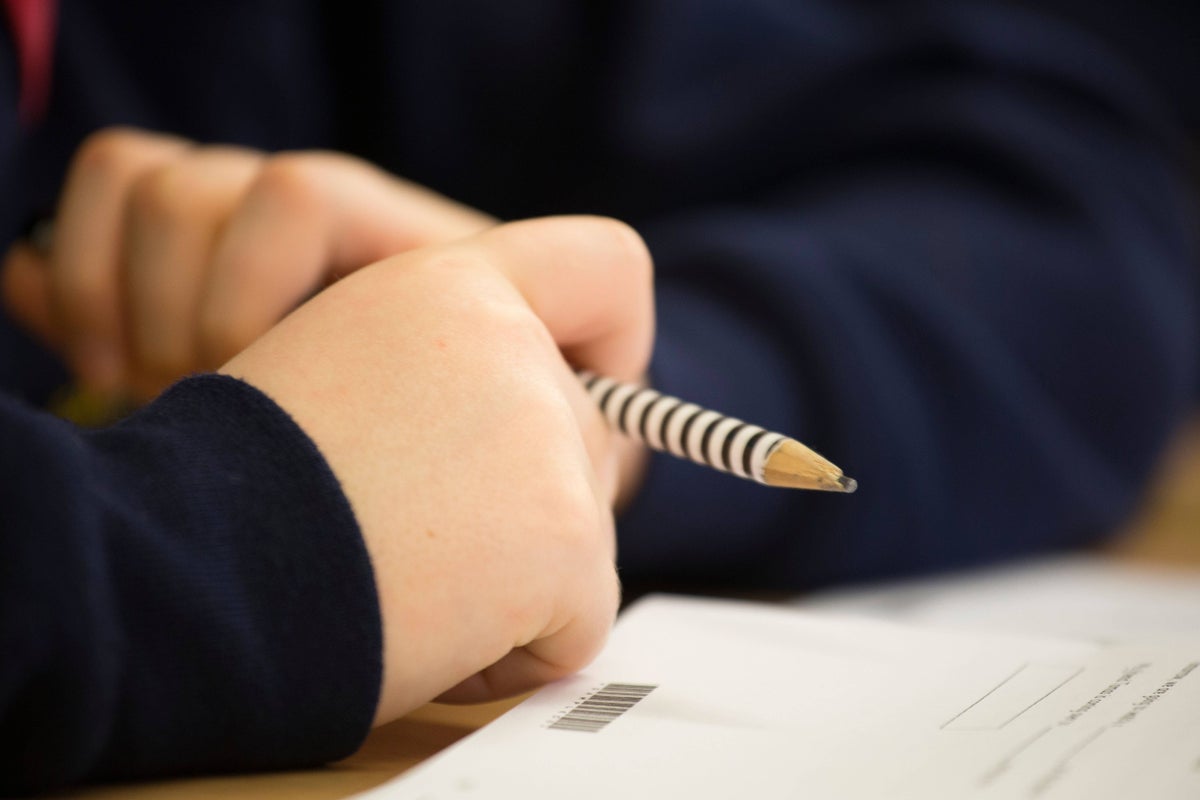
Fewer female primary school pupils met the expected standard in reading in this year’s Sats exams than last year, figures show.
The attainment gap between girls and boys in reading at Key Stage 2 narrowed this year, according to the latest Department for Education (DfE) statistics.
A detailed breakdown of the Key Stage 2 Sats results, which assess pupils’ attainment in literacy and maths by the end of Year 6 in schools in England, suggests that the attainment gap between disadvantaged pupils and their peers has narrowed slightly – but it is still larger than before the pandemic.
Overall, 73% of Year 6 pupils in England achieved the expected standard in reading, down from 75% in 2022.
The latest test results of 11-year-old pupils highlight the stark inequalities that scar our education system in the post pandemic era— Lee Elliot Major, professor of social mobility
Girls continue to outperform boys, but the latest figures show that 76% of girls met the expected standard in reading this year, down from 80% last year.
The proportion of boys meeting the expected standard in reading was unchanged at 70%.
It comes after parents and teachers complained that this year’s Sats reading paper was too difficult, with reports that some staff struggled to understand the questions and some children were reduced to tears.
Figures, released in July, showed that 59% of pupils met the expected standard in all of reading, writing and maths this year – the same as last year. In 2019, 65% achieved the expected standard in all three areas.
The Government’s aim is for 90% of children to leave primary school having achieved the expected standards in reading, writing and maths by 2030.
The latest DfE data suggests that the “disadvantage gap” has narrowed slightly from 3.23 in 2022 to 3.20 this year.
Today’s data still shows a wide attainment gap between advantaged and disadvantaged pupils— Paul Whiteman, NAHT general secretary
But the provisional data does not yet include some pupils in the care of a local authority, and once they are added the DfE expects the gap to increase.
In 2019, the disadvantage gap in England was 2.91.
In 2022, the gap increased to the highest level in a decade which the DfE said suggested that the pandemic had a “greater impact on disadvantaged pupils”.
Niamh Sweeney, deputy general secretary of the National Education Union (NEU), said: “The disadvantage gap has been reduced by a mere 0.03 and remains significantly higher than in 2019 – evidence of this Government’s failure to meaningfully address child poverty and invest in our schools.”
Paul Whiteman, general secretary of school leaders’ union the NAHT, said: “Today’s data still shows a wide attainment gap between advantaged and disadvantaged pupils.
“As the Government themselves suggest in their analysis, this is most likely a reflection of the impact of the pandemic, the impact of which was felt more greatly for disadvantaged families and children.
“It was recognised at the time that this would be the case, which is why an ambitious educational recovery plan was proposed, which the Government refused to fund.
“The attainment gap we are now seeing is, in part, a result of that decision, as well as more recent pressures such as the cost-of-living crisis.”
The statistics also show that London was the highest performing region and the South West and the East of England were the lowest performing regions.
The gap between the highest and lowest performing regions remained unchanged at eight percentage points.
Lee Elliot Major, professor of social mobility at the University of Exeter, said: “The latest test results of 11-year-old pupils highlight the stark inequalities that scar our education system in the post pandemic era.
“It is simply unacceptable that children from under-resourced backgrounds or happen to have hailed from outside London and the South East are increasingly likely to be failing to meet expected standards in England’s primary schools.”
A DfE spokesman said: “Our mission is to make sure that every child has a world class start in life. It is great to see an increase in the proportion of disadvantaged pupils and those with SEN meeting the expected standard in reading, writing and maths.
“We have been relentlessly focused on closing the gap between disadvantaged pupils and their peers, and we continue to fund our flagship National Tutoring Programme to help young people make up for time lost during the pandemic.
“We also continue to drive up standards as demonstrated by England coming fourth out of 43 countries that tested children of the same age in the PIRLS international survey of the reading ability of nine and 10-year-olds.”







